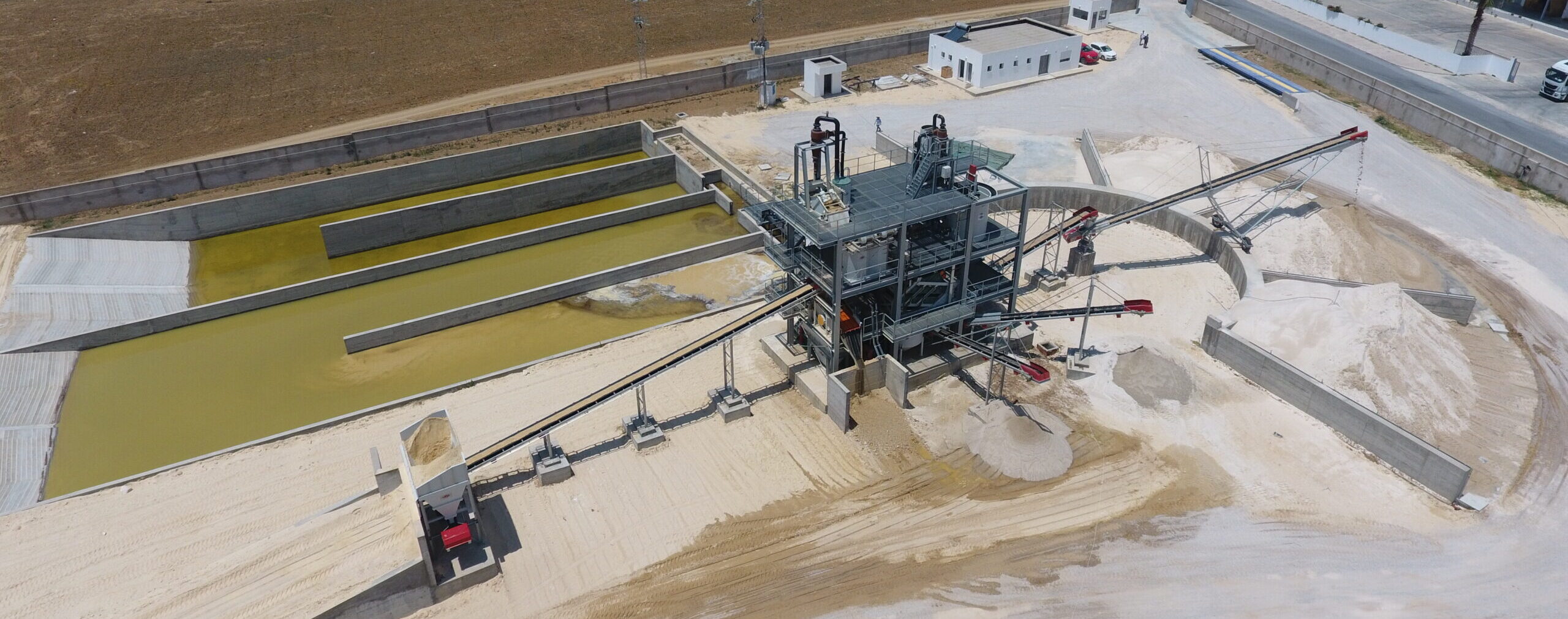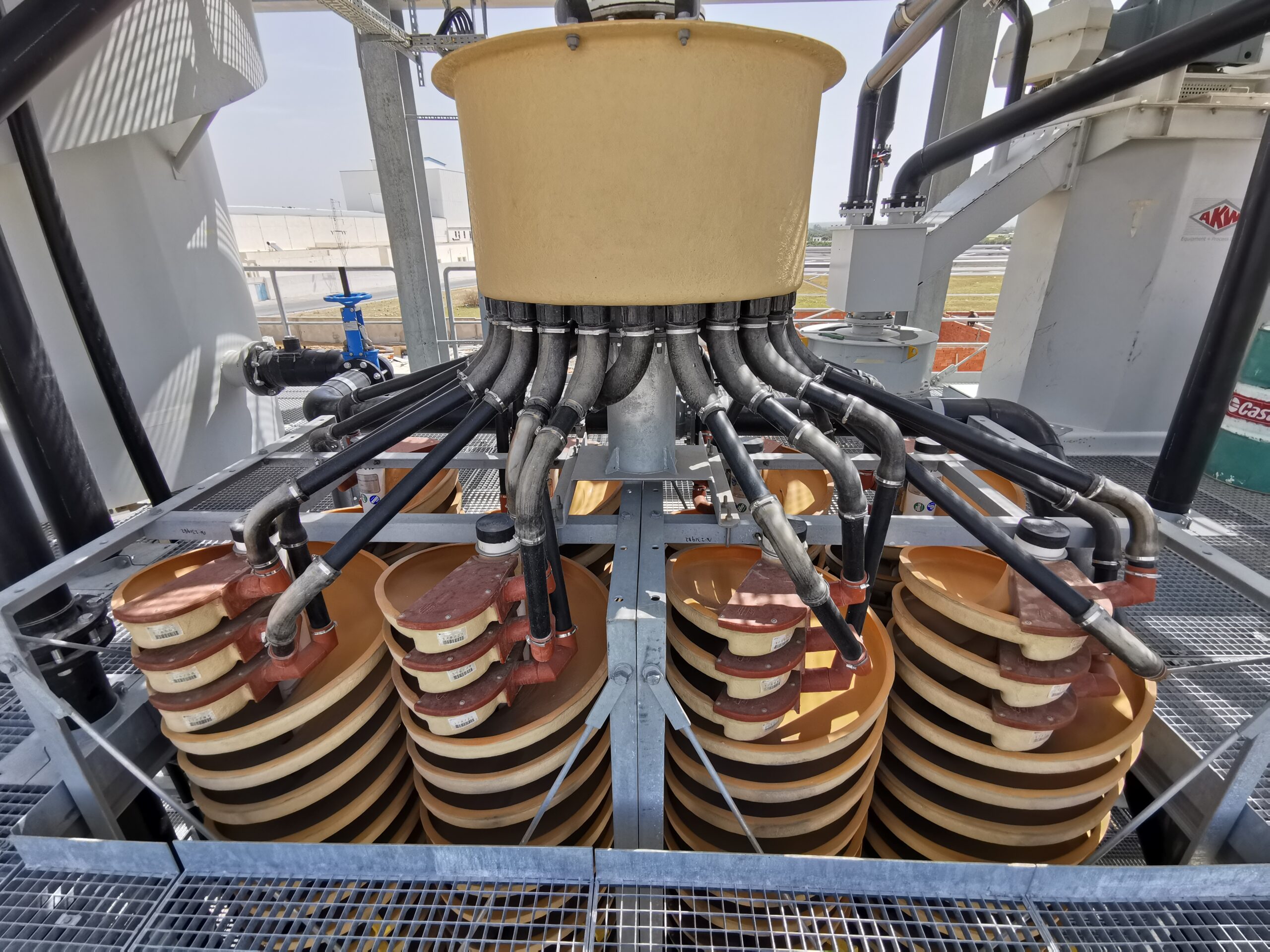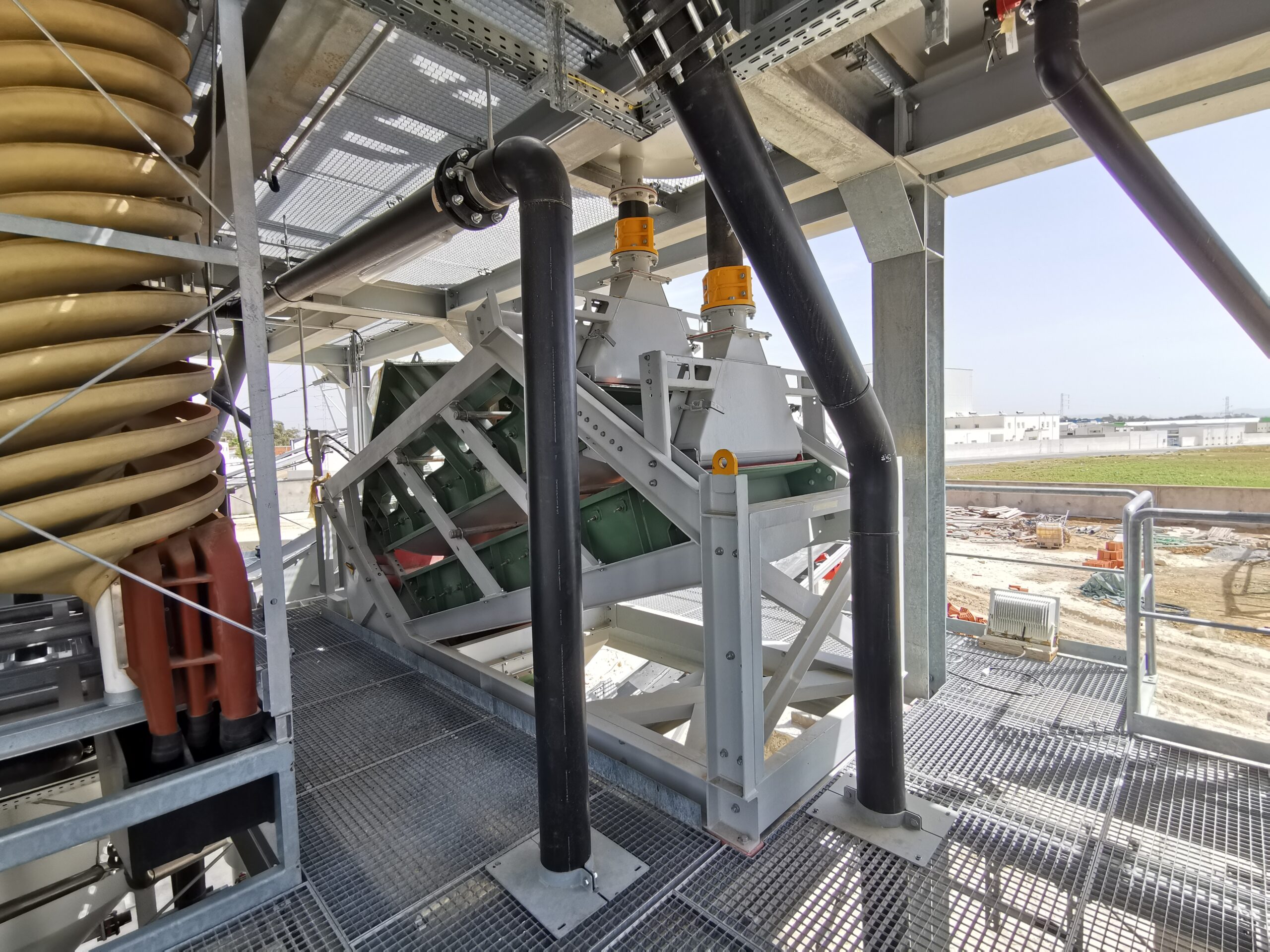SILICA SAND PROCESSING PLANT
for the Production of Glass and Foundry Grades
After water, sand is the world’s most consumed natural raw material. Since sand is not only needed for buildings or roads, but also for glass, cosmetics or smartphone screens, the demand far exceeds natural resources. For more than 60 years, AKW Equipment + Process Design, a leading specialist in wet mechanical processing and environmental technology, has been helping to process different types of sand as a usable raw material for a wide range of industries with its equipment, process units, and plants.
In the glass industry, silica sand is a key ingredient in the production of glass products due to its high silica content, low impurities concentration (typically Fe2O3, Al2O3, TiO2) and physical properties. As such, glass sand generally has a higher purity and a more controlled grain size compared to regular silica sand. It undergoes processing to remove impurities and achieve specific characteristics required for glass production. Glass sand is a critical component in making various types of glass, including float glass, container glass, fiberglass, and specialty glass products.
In the given case, a recent commissioned industrial silica sand project example will be presented.
SITUATION
Our Tunisian customer is involved in the business of producing hollow glass. To be able to cover all the local market needs, as well as being able to export to North Africa and Southern Europe, the customer contacted us to design a silica sand washing plant for producing different sand qualities to serve various industrial applications, especially the glass production.
With the aim of having full control on the different raw material qualities for the glass production and a guarantee on delivery reliability, the project started with reviewing the composition of different samples of raw materials with regard to their chemical and physical characterizations, followed by pilot tests in our technical center in Germany with up to 6 different samples types. Accordingly, our experts were able to define a suitable concept for the customer to treat his raw materials in the most efficient way and to maximize the overall yield of the process.
In the processing of the glass sand, it’s important to reach the target size fraction (upper and lower cut size) with specific processing equipment such as the use of hydrocyclones and fine-screening machines, in order to achieve sharp classification. Also, to purify the silica sand to increase the SiO2 content by minimizing the impurities such as reducing the amount of iron oxide Fe2O3, aluminum oxide Al2O3 and titanium dioxide TiO2, which can be achieved with different density sorting solutions and magnetic separation. In addition to the glass sand production, the customer requested to have the possibility to produce foundry sand to cover the local market needs with a specific size fraction and a limited amount of fines (-100 µm <4%).
Thus, AKW Equipment + Process Design successfully supplied for this green field EPC project, the full set of the key processing equipment, steel works, piping and cabling. The civil work was done by the local contractor according to the drawings prepared by AKW Equipment + Process Design.
PROJECT INFORMATION
Key Facts
| Project Start | January 2020 |
| Mounting | November 2020 |
| Commissioning | April 2021 |
Plant Capacity
| Capacity | Size Range | |
| Glass Sand | 60 t/h | 0-20 mm |
| Foundry Sand | 60 t/h | 0-20 mm |
 |
 |
PROCESS DESCRIPTION
The plant is designed to produce different types of silica sand qualities using different automated programmes. The plant is producing a quality A as glass sand, with size range of 100 – 800 µm and 250 ppm Fe2O3 content for clear container glass production, and a quality B as glass sand in size range of 100 – 800 µm and Fe2O3 content in the range of 500 – 550 ppm for coloured container glass production.
For foundry application, the sand produced must be in the size range 100-350 µm, and is produced via another program.
PRODUCING QUALITY A & B
For the production of quality A glass sand, the material starts its process with pre-screening for removal of the coarse material (> 4 mm) so as to protect the lifetime and efficiency of the downstream process equipment. The material fraction < 4 mm is directed to a hydrocyclone AKA-VORTEX for desliming, followed by high-performance attrition cells AKA-TRIT, where it undertakes a mechanical surface treatment. The fine screening for the sharp cut at 0.8 mm with the help of our AKA-SCREEN is performed before stockpiling of the oversize fraction (0.8 – 4 mm). The subsequent flat-bottom hydrocyclone AKA-VORTEX is used for further desliming and concentration regulation before the material is fed to the spirals AKA-SPIN for density sorting and removal of a heavy fraction polluted in Fe2O3. One dewatering screen for final treatment of the by-products and one dewatering screen for final treatment of the products (100 – 800 microns) are installed as last processing step before stock piling.
To produce quality B glass sand, the processing route remains the same, except for the attrition cells AKA-TRIT which are by-passed since the requirements for the Fe2O3 content are lower.
PRODUCING FOUNDRY SAND
For the production of the foundry sand, the processing route remains the same, whereas the spirals AKA-SPIN are by-passed and an upstream classifier AKA-SIZER is inserted to perform a proper classification at 350 µm. In this process route the attrition cells AKA-TRIT remains part of the process in order to destroy the fine sandstones and to free-up the sand from any trace of bounded clay that is a negative element for foundry application.
The products stockpile concrete foundation is designed with slopes and a drainage system so as to collect the water from the stockpiles which will be sent back by gravity to the process water sedimentation ponds in order to maximize the water recovery.
OUTPUT PRODUCTS
| Glass Sand | Foundry Sand |
| 0.1 – 0.8 mm | 0.1 – 0.35 mm |
CHEMICAL COMPOSITIONS
| Output (Product Glass Sand) | |||
| Raw Material (Feed) | Quality A | Quality B | |
| SiO2 | 98.80 % | 99.60 % | 99.50 % |
| Fe2O3 | 0.12 % | 0.025 % | 0.050 % |
| Al2O3 | 0.27 % | 0.10 % | 0.18 % |
PROCESS WATER RECYCLING
There are different ways to recycle the process water, either through water lagoons, or process water sedimentation pond, or process water thickener AKA-SET.
In this example and with a more limited area, the desire for a water treatment system given, compact sedimentation ponds were identified as to be the most suitable solution (in total 2 ponds, one in operation and the second in stand-by). The ponds are dimensioned by the team of AKW Equipment + Process Design and usually made by the client out of concrete on the basis of drawings supplied by AKW Equipment + Process Design, hence resulting in a long life-time for a low Capex requirement. With the addition of flocculants to the wastewater, the settling efficiency can be enhanced, if needed. The purified water will be pumped back to the processing plant for reuse by means of a submersible pump. The sedimentation pond is cleaned up from the sludge that settled down on a regular basis in an easy way e.g. by using a wheel loader.
Overall View Processing Plant
Upstream Classifier AKA-SIZER for sharp classification
Spirals AKA-SPIN for density sorting
Screening AKA-SCREEN for fine screening






